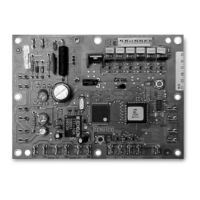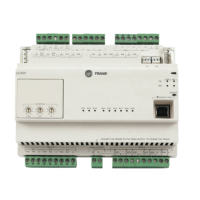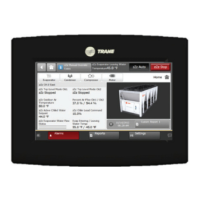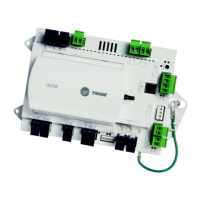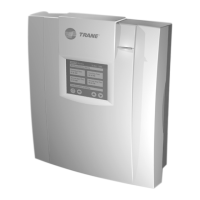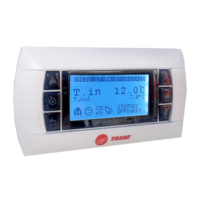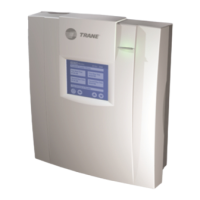Chapter 6 Sequence of operations for the 4-cool configuration
42 CNT-SVX12C-EN
Discharge air tempering
Discharge air tempering (also called supply air tempering) prevents occu-
pant discomfort caused by cold outside air being brought into a space
through the outside air damper. This is an important feature in cold cli-
mates because the outside air damper is never fully closed for ventilation
purposes. Discharge air tempering starts when:
• The controller is in heating mode.
• The space is otherwise satisfied (no heating or cooling required).
• Ventilation air is passing through the unit
• The discharge air temperature falls 10°F (5.6°C) below the occupied
heating setpoint.
Tempering stops when the occupied heating setpoint is exceeded. To
enable this function, use the Rover service tool to select Supply Air Tem-
pering Enabled.
Demand control ventilation
The Tracer ZN517 unitary controller modulates the outside air damper
position in direct response to the CO
2
level, regulating the amount of out-
door air allowed to enter. This function is referred to as demand control
ventilation. Demand control ventilation requires that the two triac (3-
wire floating point) outputs be used to control the damper actuator. The
minimum damper position will increase as CO
2
levels rise above
500 ppm. The function executes with a 3-minute loop time to allow time
for the sensor to respond.
To enable this function, use the Rover service tool to configure the Tracer
ZN517 as follows:
• Configure AI1 as a carbon dioxide sensor
• Enter a minimum CO
2
level (Control Point)
(factory default: 500 ppm).
• Enter a maximum CO
2
threshold (Threshold)
(factory default: 1500 ppm).
When the CO
2
level reaches the threshold, the minimum position is
100% open.
Unit protection strategies
The following strategies are initiated when specific conditions exist in
order to protect the unit or building from damage:
• Filter maintenance timer
• Fan off delay
• Fan status
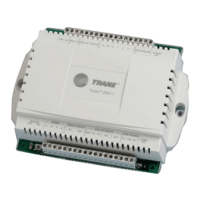
